Time For A Tune-up: Caring for Your Garden Tools
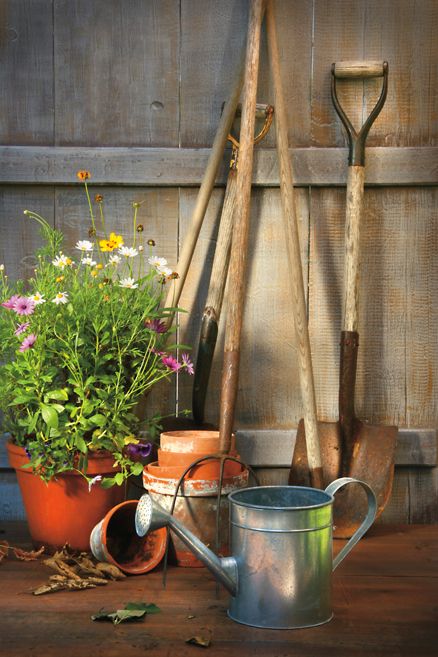
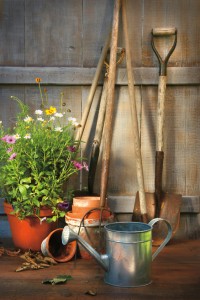 Fall can be a busy time in the garden. Cooler weather means cleaning up the vestiges of summer blooms and crops, planting fall ornamentals and edibles, and establishing new foundation plants. Then there’s raking, mulching, aerating, and weeds that haven’t given up yet! Garden tools like green tow behind turf aerator, pruners, etc. will be getting a workout, and they are an investment worth maintaining. Therefore, you need spare parts in your storage. Here are some tips to keep them in top shape for many seasons ahead.
Fall can be a busy time in the garden. Cooler weather means cleaning up the vestiges of summer blooms and crops, planting fall ornamentals and edibles, and establishing new foundation plants. Then there’s raking, mulching, aerating, and weeds that haven’t given up yet! Garden tools like green tow behind turf aerator, pruners, etc. will be getting a workout, and they are an investment worth maintaining. Therefore, you need spare parts in your storage. Here are some tips to keep them in top shape for many seasons ahead.
Cutting and Pruning Tools
Hard-working garden tools like pruners, loppers, shears and handsaws need a little TLC to keep them functioning properly.
It’s essential to make sure blades are sharp before you get to work. Dull blades, like dull knives, are dangerous to use and can put strain on your body. They’ll also shred plant tissue, which makes it harder for the plant to heal and exposes it to disease. The cheapest and most versatile sharpener is a metal file, which costs somewhere in the neighborhood of $10. Single-cut files have rows of parallel teeth and can be used for general sharpening and finishing. Double-cut, also known as cross-cut files, have a second set of teeth forming a diamond pattern. They’ll remove a lot of metal and get the job done quickly, so they’re best for bigger tasks. Whichever you choose, make sure you sharpen only the cutting blade, on the beveled side. To do so, hold the file at a 20-degree angle and use a smooth stroke, moving it away from your body, along the blade you’re sharpening. You don’t want to file away too much metal; the goal is to buff away nicks and create a clean, smooth edge. Generally, plan to sharpen tools once a season or after heavy use.
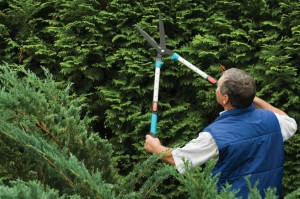 After using your garden tools, take a couple of minutes to clean them so that dirt and rust don’t shorten their lifespan. Use the hose or a bucket of water and some rags to wipe blades clean, and be sure to dry them well. If there’s rust on the blades, use a steel wool pad or wire brush to scrub it off. For sap, apply a solvent like turpentine or mineral spirits, and rub it with a rag. Some gardeners also report success removing sap with more common household items like nail polish remover, WD-40, and hand sanitizer gel.
After using your garden tools, take a couple of minutes to clean them so that dirt and rust don’t shorten their lifespan. Use the hose or a bucket of water and some rags to wipe blades clean, and be sure to dry them well. If there’s rust on the blades, use a steel wool pad or wire brush to scrub it off. For sap, apply a solvent like turpentine or mineral spirits, and rub it with a rag. Some gardeners also report success removing sap with more common household items like nail polish remover, WD-40, and hand sanitizer gel.
Disinfecting blades is also important as a general practice, and especially if you’re working on a plant that’s infected with any type of spore or fungus. If pruning an infected plant, be sure to disinfect the blades before moving on to the next item to avoid spreading the problem. Otherwise, it’s probably okay to disinfect at the end of your gardening session, after cleaning.
Lysol has been shown to be the least corrosive on metal, though chlorine bleach, Listerine, Pine-Sol, hydrogen peroxide, and 70 percent rubbing alcohol will work just fine too. Dilute Lysol in a bucket of water (1-to-5 ratio) for soaking, or use it undiluted, on a cloth to wipe the blades directly. You can also use the spray, or even those disposable wipes in the pop-up container. The important thing is to let the disinfectant work for a couple of minutes, then rinse it off and dry thoroughly.
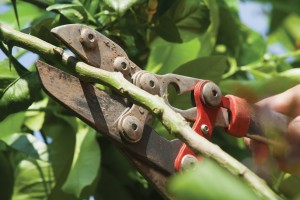 Check that the bolts that hold your pruners together are properly tightened. You want the blades to pass each other easily, but no light should appear between them when at rest.
Check that the bolts that hold your pruners together are properly tightened. You want the blades to pass each other easily, but no light should appear between them when at rest.
Finally, oil your tools. Linseed oil is an ecofriendly product that can be used on blades and pivot points to keep them working smoothly and prevent rust, and also on wooden handles to stop them from drying out and cracking. You can also use mineral oil, or really any lubricant oil, on the blades and pivot points. But for wooden handles, boiled linseed oil is best. If handles are rough or splintered, rub them with some sandpaper before applying the oil.
Digging and Raking Tools
Shovels, spades, hoes, rakes, and the like will benefit from similar maintenance. If you find your shovel coated in a thick layer of that heavy clay we enjoy here in our area, try using a putty knife to pry off those large clumps. From there, you can foll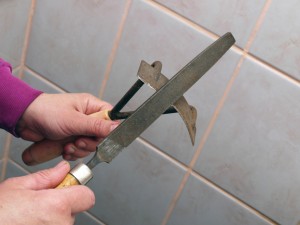 ow the same cleaning practices you use for your cutting tools. A stiff brush, a hose and some rags will remove the rest of the dirt. Steel wool will scour away any rust.
ow the same cleaning practices you use for your cutting tools. A stiff brush, a hose and some rags will remove the rest of the dirt. Steel wool will scour away any rust.
A handy tip for long-handled tools is to clean and sharpen them in a bucket of sand and oil. Fill a five-gallon bucket with sand, and moisten it with enough mineral oil to make the sand damp, but not wet. (A quart or a bit less should do it.) Remove clumps of dirt, then plunge the shovel up and down in the bucket a few times. When you’re done, store the tool right there in the bucket!
If you don’t use the bucket trick, it’s still a good idea to sharpen shovels and spades so that they’re easier to dig with. A metal file will do the job here as well.
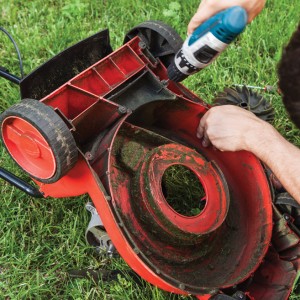 Motorized and Power Tools
Motorized and Power Tools
Lawnmowers like john deere mowers need some annual maintenance. Once a year, you should sharpen the blades (if you have this professionally done, they will balance the blades as well), change the oil, spark plugs, and air filter, and make sure the wheels are lubricated. Doing this in fall means your mower will be ready for action in spring, ensuring optimal performance for tasks like mowing, trimming, or even handling finish mowers. Clean the underside of your lawnmower deck and the blades after each use to prevent grass and chlorophyll build-up, which can dull blades and spread disease. Wipe down the rest of the mower and allow it to dry before putting it away. Similarly, clean grass from your string trimmer after use.
End of Season
Before retiring for the winter, clean and oil your tools, and store them in a safe, dry place. Don’t forget your wheelbarrow! Clean it out, and tighten and oil the bolts and axle (you can probably wait until spring to inflate the tires). Once it’s too cold to water plants, you should drain hoses, sprinklers, and watering cans and store them for winter. Run the fuel out of your power tools. The extra minutes you spend now to maintain your tools will pay off in the seasons to come!
Cleaning outdoor tools, Cross-cut files, Disinfecting tools, lawn mower maintenance, Sharpeining Shovels







Gail
Before storing some metal tools such as garden shovels and tree pruners, you should check them for rust. If you find some rust spots, you can rub them down with steel wool. You should also pay attention to the wood handles. If you find ones that are worn by the weather, it’s a good idea to rub and sand them using soaked cloth with mineral oil.